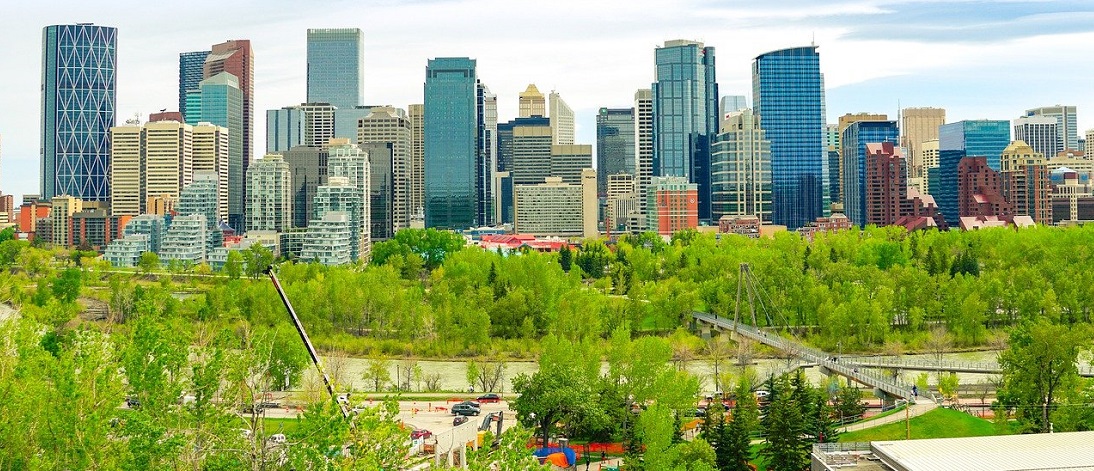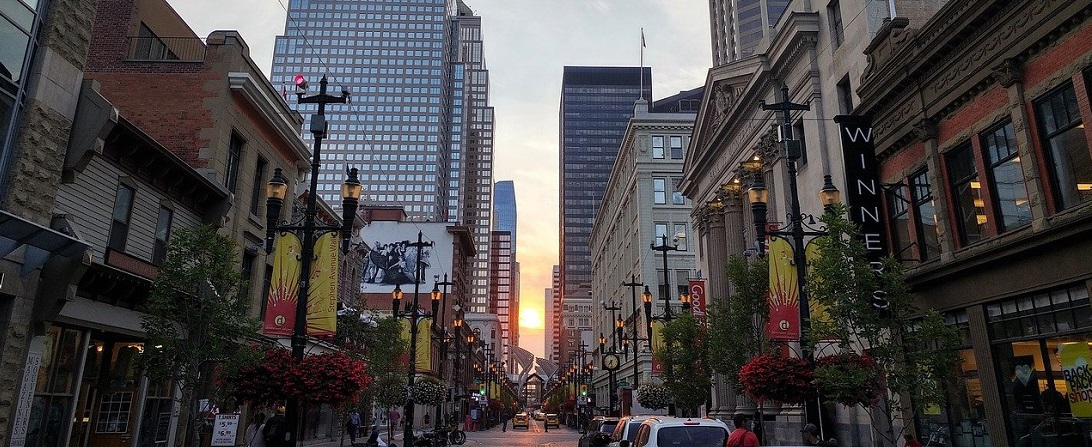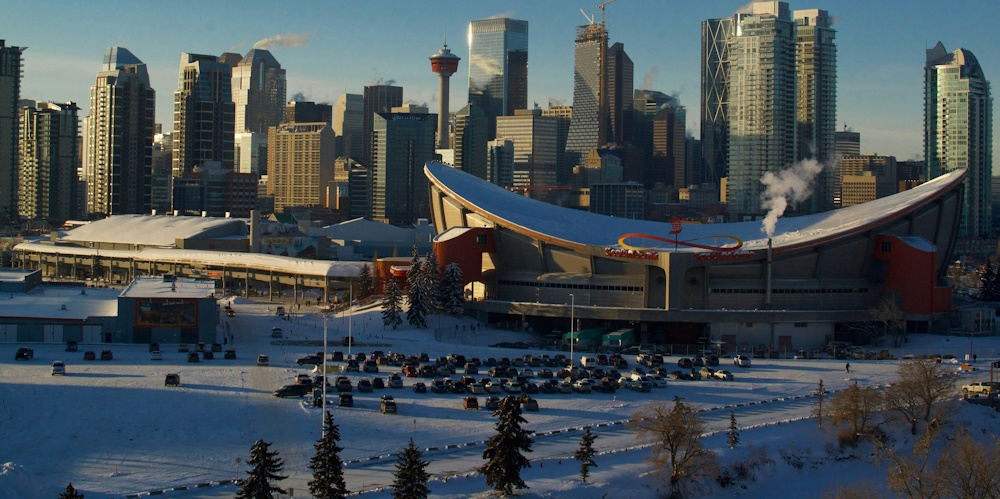With its cowboy character and well-preserved frontier history, Calgary is recognised as the ‘most American’ Canadian city. If you’re moving to Calgary, you’ll enjoy picturesque views, outdoor adventures like skiing, hiking, and mountain biking, and a diverse cultural offering, thanks to the city’s proximity to the Rocky Mountains and its evolving arts scene.
Living in Calgary as an expat
Living in Calgary is, by all accounts, more of a pleasure than a chore. You can enjoy a wide range of outdoor winter pursuits, such as skiing and snowboarding, while summers are usually for mountain biking, fishing and horse riding.
Calgary is often considered less cultural than other major Canadian cities like Toronto and Vancouver. That perception is rapidly changing. Living in Calgary as an expat means you can experience the city’s cultural evolution, which is marked by new cultural institutions, festivals, and a growing appreciation for the arts.
The city boasts a thriving theatre industry and a rich heritage of country-folk music. International Avenue, in particular, stands out with its exciting mix of ethnic restaurants and cultural diversity, making it an exciting place to explore.
The job market in Calgary is notoriously competitive, so we recommended you secure a role before relocating. That said, low taxes have stimulated the city’s economy by incentivising many businesses to set up shop in Calgary. If you’re skilled and qualified, you should be able to find opportunities across many fields, including engineering, geology, tourism, agriculture, financial services, IT, and the growing technology sector.
If you’re looking to commute, you needn’t worry. Calgary boasts an extensive and efficient public transport system consisting of the CTrain and buses, making getting around a breeze. When finding a place to stay, consider the proximity of your residence to transit options, as areas along the CTrain routes offer particularly convenient commuting options.
Job Market and Working in Calgary
Getting Around in Calgary
Cost of living in Calgary
The cost of living in Calgary has been impacted by the rising cost of accommodation, driven by a growing population and a lack of adequate infrastructure to support the growth. Recent economic trends have significantly affected the housing market, particularly in the rental sector, with an influx of new residents heightening competition for available rental units.
Childcare is another significant expense facing working parents. Fortunately, permanent residents and those on work or residence visas are eligible for Alberta’s highly subsidised health insurance scheme, allowing you to reduce your expenses. Be sure to plan for other costs, such as healthcare services not covered by insurance, transport, utilities, and groceries, which can vary depending on family size and lifestyle.
Cost of Living in Calgary
Accommodation and Utilities in Calgary
Healthcare and Alberta Health Insurance in Calgary
Expat families and children in Calgary
Calgary is a wonderful city for raising a family. Education in Calgary is generally excellent, with options including public, private, and international schools to suit different needs. Public schools in Calgary are free to attend for permanent residents and those on work visas, and you can also choose private and international schools.
Public schools are government-funded and follow the Alberta provincial curriculum, making them accessible and diverse. Private schools, on the other hand, often provide smaller class sizes, specialised curricula, and more personalised attention. For families seeking a globally recognised programme, some schools in Calgary offer the International Baccalaureate (IB) programme, which can be a great option for students planning to pursue higher education abroad.
Owing to Calgary’s fantastic green spaces and mountainscapes, you’ll always have parks, hiking trails, and recreational areas to explore with your children. The annual event calendar in the city is jam-packed with festivities for the whole family to enjoy, including multicultural festivals, concerts, and theatre performances.
Parents may also benefit from joining one of the many lift clubs and playgroups for extra support, helping to build a community and make settling in easier. New expat families can also participate in community events and playgroups designed to help them settle in.
Education in Calgary
Shopping, Attractions and Activities in Calgary
Climate in Calgary
The weather in Calgary is categorised as a humid continental climate. Summers in the city are warm, while winters are ice-cold with lots of snowfall.
Calgary’s winters are no joke, and preparing well is key to making the season more manageable. Many residents focus on home preparation, including insulation, sealing drafts, and furnace maintenance to keep heating systems running smoothly. Vehicle preparation is just as important – winter tyres are a must, and emergency kits with blankets, food, and tools are highly recommended.
Chinook winds are a defining feature of Calgary’s winter climate, bringing sudden bursts of warm, dry air from the Rockies that can raise temperatures dramatically in just a few hours. To handle the unpredictability of these winds, many residents dress in layers to adjust to rapid temperature changes. Chinook winds can also cause headaches for some people. For homes, it’s essential to maintain windows and roofs to prevent any damage caused by the strong winds that often accompany Chinooks.
Weather and Climate Chart in Calgary
Once you move to Calgary, you’ll soon find yourself falling in love with the city’s energetic yet peaceful way of life, with many choosing to settle permanently.














